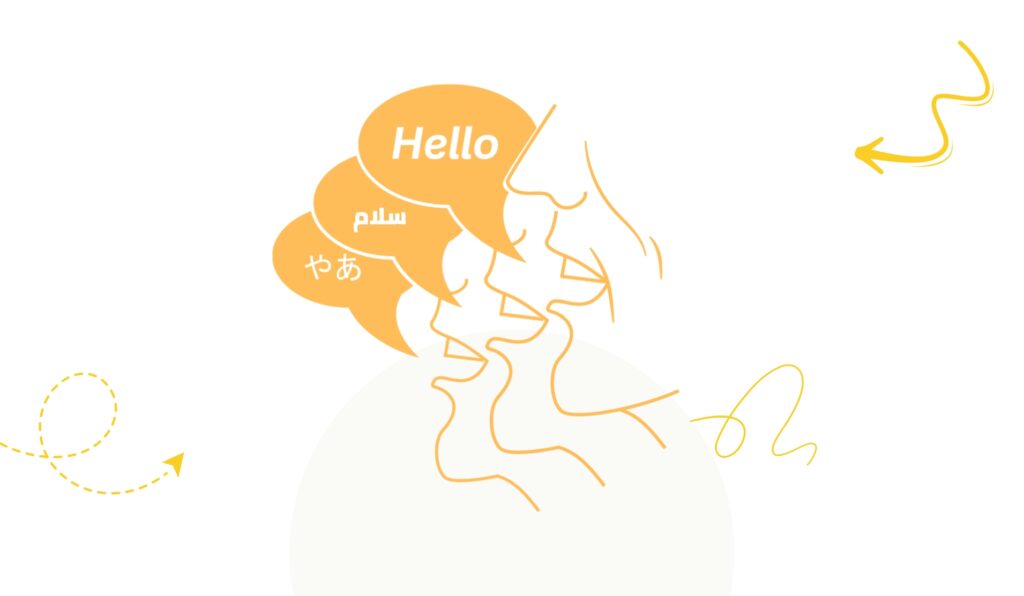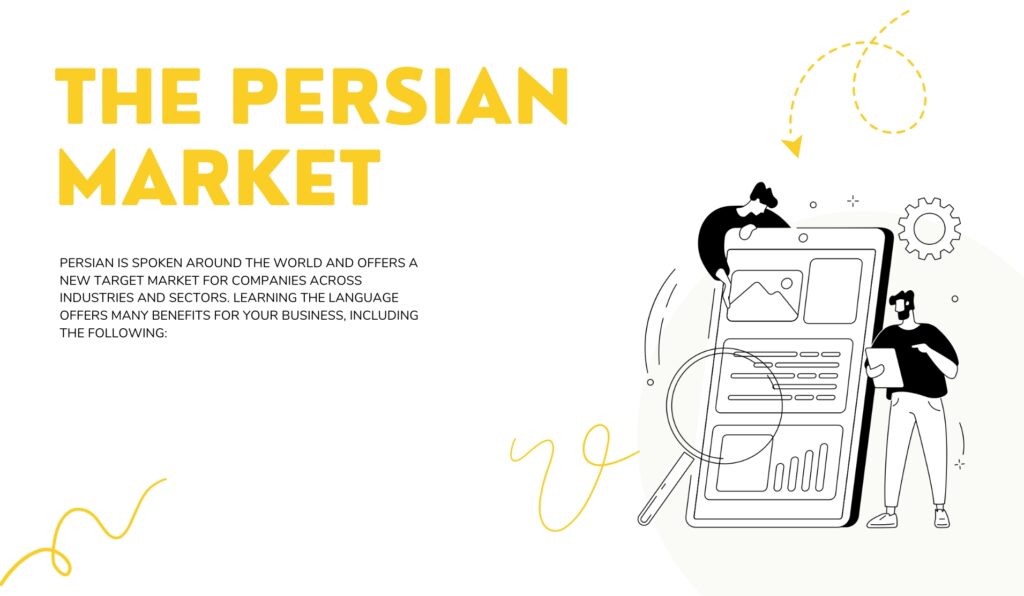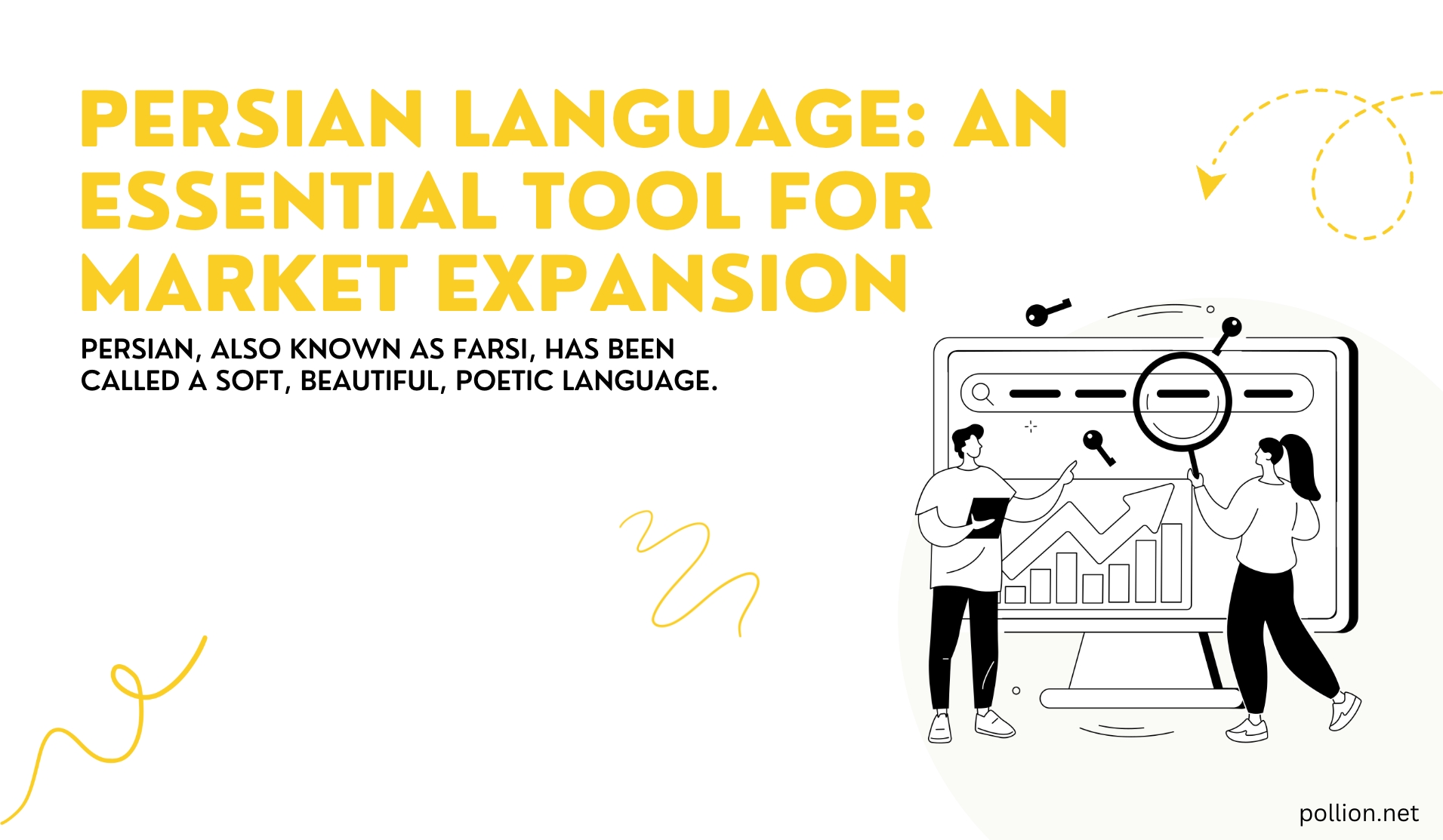Persian, also known as Farsi, has been called a soft, beautiful, poetic language. It’s also an ancient language with roots going back about 3,000 years. With over 110 million native speakers around the world, Persian is a valuable language for businesses across a wide range of industries and sectors.
In this article, we discuss the history of Persian, the language’s alphabet and script, and much more.
Table of Contents
The Historical Background of Persian
The Persian language is an Indo-European language with a rich history dating back 3,000 years. The language has been traced back to the Achaemenid Dynasty (522 BC to 486 BC). In that time, Persian was known as “Old Persian.” It was mainly spoken by the people of the Parswash tribe, who arrived in Iran during the first millennium BC. Old Persian spread across the country and became widely used in the region. The Persian language was the official language of the Achaemenid kings.
Once the Achaemenid empire fell, the language entered its next version, Middle Persian. The differences between Old Persian and Middle Persian were that the language lost all case inflections and the use of prepositions and tenses increased with the transition to Middle Persian between 300 BC to 800 BC.
From Middle Persian to today, modern native speakers have used New Persian. The transition from Middle Persian to New Persian took place sometime in the 8th to 9th centuries.
The Persian language continues to evolve today, with over 110 million native speakers worldwide. Persian is the official language of Iran and spoken in Afghanistan (as Dari) and Tajikistan (as Tajik).
Alphabet and Script
People write the Persian language in the Perso-Arabic script, an Arabic script with modified pronunciation and additional letters. People refer to this script as cursive because it joins the letters together. Furthermore, unlike English, which people write from left to right, they write Persian from right to left.
Another interesting fact about this language is that the Persian alphabet does not use capital letters. In addition, the three short vowels (a, e, o) are not written. They are left out but are understood to be included when speaking the language.
The Persian alphabet has 32 letters, with 28 of these being similar to Arabic; however, there are four additional letters that are unique to Persian.
The language includes some loanwords from Arabic and Turkish over the centuries. Today’s Persian language also contains words borrowed from French and English. In addition, Persian words have also made their way into the English language. Some English words with Persian roots include bazaar, carafe, caviar, kiosk, and pajama, amongst others.
Varieties & Dialects
There are three recognized varieties of Persian, including the following:
- Persian (Farsi): the standard language of Iran, which is also referred to as “Iranian Persian, ” “Tehran Persian,” and “Western Persian.”
- Dari: is the standard Persian of Afghanistan, which is also called “Afghan Persian.”
- Tajik Persian: is the standard Persian of Tajikistan.
People consider each variety of Persian as a separate branch of the language, each boasting its own unique dialects. However, some of the significant Persian dialects include the following:
- Hazaragi: spoken in Central Afghanistan and Pakistan
- Herati: used in Western Afghanistan
- Darwazi: spoken in Afghanistan and Tajikistan
- Basseri: used in Southern Iran
- Tehrani accent: spoken in Iran (this is the basis of Iranian Persian)
- Luri or Lori: mainly used in southwestern Iran
- Achomi or Lari: spoken in southern Iran
- Tat: used in Azerbaijan, Russian, Transcaucasia
- Judeo-Tat: spoken in Azerbaijan and Russia
- Kermani: used in southwestern Iran
While these dialects may vary in pronunciation, vocabulary, and grammar, they are generally mutually intelligible.
Related Post : The Importance of E-Learning Localization for Global Audiences
Persian in the Digital World

As the number of Persian speakers continues to grow, the amount of Persian language content has also grown online. According to w3techs, English dominates a little over half of all web content, but Persian language content constitutes about 1.8%. We anticipate an increase in the percentage of web content in Persian.
Online content written in Persian includes websites, blogs, podcasts, social media platforms, and other content directed toward Persian speakers. For instance, you can find Persian used on popular websites and services such as BBC Persian and Google Translate. You can also find a wide range of Persian language courses online.
Persian in Media & Entertainment
As Persian content becomes more popular around the world, you can now find the language featured in media and entertainment. Persian music, movies, and TV shows are gaining in popularity within Iran and worldwide with the Persian-speaking community.
Many international platforms now offer Persian language content for this audience. You can find Persian programming on platforms such as YouTube, Amazon Books, and more.
Not only is Persian popular with native speakers, but it’s also earning a following with non-native speakers. As Persian culture is increasing in popularity, so is programming in this language. In addition, with Persian architecture, art, and traditions becoming more popular worldwide, so, too, is programming gaining a following.
Importance for Global Communication
The Persian language remains crucial for today’s world. For one thing, it’s one of the most important languages in the Middle East and Central Asia.
Another reason the language continues to be crucial is that Persian speakers are in high demand across various sectors, including international law, government, business, and more. Finally, Persian speakers are found all around the world, in almost every major city in the West.
By understanding Persian, your business can tap into new opportunities and you can form new friendships in countries where people speak this language. The Persian language gives you and everyone the chance to have new cultural experiences, too!
The Persian Market

Persian is spoken around the world and offers a new target market for companies across industries and sectors. Learning the language offers many benefits for your business, including the following:
- Your business can reach new target markets and audiences
- Expand your business network contacts
- Effectively communicate with native speakers
- Establish business and trade ties with those in neighboring countries
- And more
Moreover, the e-commerce and technology sectors have expanded due to the increasing numbers of Persian speakers accessing the Internet. E-commerce is strong throughout Iran and the surrounding countries. Customers now enjoy access to a broad range of products available throughout the Persian market.
Localization and Translation Needs
With more businesses reaching out to Persian language native speakers, there’s also a growing need for localization and translation. Professional translation companies, like Pollion, are ready to help businesses translate and localize their content into Persian. But why is localization necessary when the content is translated into Persian?
Localization is the process of modifying the translated content to the culture and language of the people in the target audience. This process is much more than only translating the content from the source language into the target language.
Content localization makes the content fit the local culture of the target audience. We adapt the content to conform to the cultural norms of the specific area. We localize all content aspects, including the following:
- Register
- Images
- Symbols
- Colors
- Currency
- Style
- Date/time formats
- And more
Content must also be localized to avoid offensive expressions, jokes, idioms, and more. The localization process is essential. The goal is to ensure that people in the target market feel comfortable with the brand and feel they can trust it.
Using the local language isn’t enough. Showing respect for the target audience’s language and culture is the way to win over new customers. And this can be done by hiring a professional translation company that offers localization services, such as Pollion.
Can You Rely Only on Machine Learning Translations?
Machine learning is also a possible translation method when translating from a source language into the Persian language. The reason is that machine learning translations are not always accurate. In addition, machines are not able to translate the context found in a document or other content.
For these reasons, it’s best to use a combination of human and machine learning to have the best results when translating from another language into Persian or other languages. Translation companies, such as Pollion, use both methods, combined with localization, to ensure the content meets the needs of the target audience, in this case, Persian.
Concluding Thoughts
The Persian language is an ancient language that’s very much alive today. There are over 110 million native speakers of Persian found in communities around the world.
Businesses that are interested in reaching new target markets will find that Persian speakers are searching online for content in their native language. Companies that want to expand into new markets should consider the Persian-speaking communities around the world.
Native speakers are searching online for content in their native language, making them a rich market for businesses across a broad range of industries and sectors.
